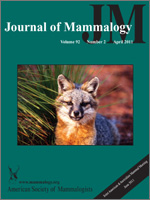B chromosomes (Bs) are supernumerary chromosomes relative to the standard karyotype. The maintenance of Bs in the yellow-necked field mice (Apodemus flavicollis) was reconsidered by examining their effects on 3 components of cranial variability: canalization, developmental stability, and morphological integration. Bs do not disturb developmental homeostasis in their carriers. Moreover, Bs play a significant role in structuring cranial variation. We suggest that direct interactions between developmental pathways in mice without Bs might be a dominant mechanism for generating covariation of cranial traits, and integration of cranial traits in B carriers could be generated primarily by parallel variation of separate developmental pathways. Integration due to parallel variation is more predisposed to modifications by natural selection than integration caused by direct interactions, which could be beneficial to B carriers under variable environmental conditions. By contributing to the genetic variability of species possessing them, Bs provide themselves with long-term presence in populations. Therefore, the Bs of A. flavicollis should be considered as symbiotic genomic elements.
How to translate text using browser tools
15 April 2011
B chromosomes and cranial variability in yellow-necked field mice (Apodemus flavicollis)
Vida Jojić,
Jelena Blagojević,
Mladen Vujošević
ACCESS THE FULL ARTICLE

Journal of Mammalogy
Vol. 92 • No. 2
April 2011
Vol. 92 • No. 2
April 2011
Apodemus flavicollis
B chromosomes
canalization
cranium
developmental stability
fluctuating asymmetry
geometric morphometrics




